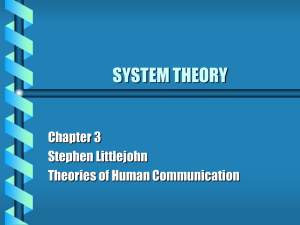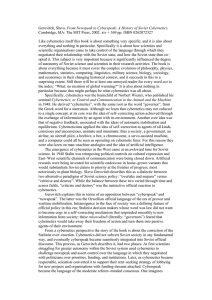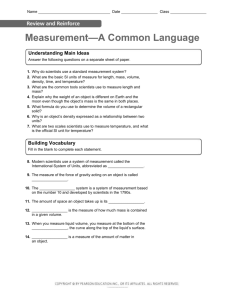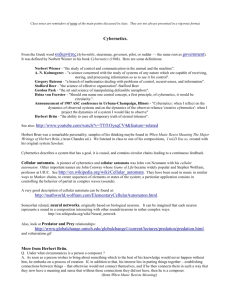Systemic Solutions for Systemic Problems
advertisement
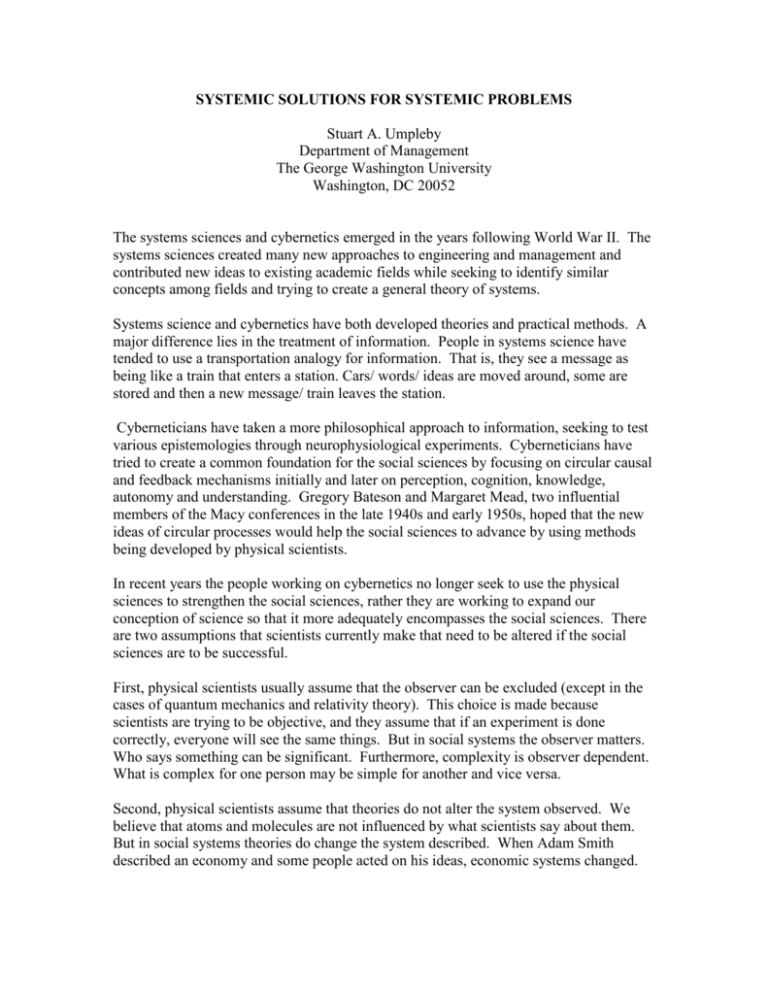
SYSTEMIC SOLUTIONS FOR SYSTEMIC PROBLEMS Stuart A. Umpleby Department of Management The George Washington University Washington, DC 20052 The systems sciences and cybernetics emerged in the years following World War II. The systems sciences created many new approaches to engineering and management and contributed new ideas to existing academic fields while seeking to identify similar concepts among fields and trying to create a general theory of systems. Systems science and cybernetics have both developed theories and practical methods. A major difference lies in the treatment of information. People in systems science have tended to use a transportation analogy for information. That is, they see a message as being like a train that enters a station. Cars/ words/ ideas are moved around, some are stored and then a new message/ train leaves the station. Cyberneticians have taken a more philosophical approach to information, seeking to test various epistemologies through neurophysiological experiments. Cyberneticians have tried to create a common foundation for the social sciences by focusing on circular causal and feedback mechanisms initially and later on perception, cognition, knowledge, autonomy and understanding. Gregory Bateson and Margaret Mead, two influential members of the Macy conferences in the late 1940s and early 1950s, hoped that the new ideas of circular processes would help the social sciences to advance by using methods being developed by physical scientists. In recent years the people working on cybernetics no longer seek to use the physical sciences to strengthen the social sciences, rather they are working to expand our conception of science so that it more adequately encompasses the social sciences. There are two assumptions that scientists currently make that need to be altered if the social sciences are to be successful. First, physical scientists usually assume that the observer can be excluded (except in the cases of quantum mechanics and relativity theory). This choice is made because scientists are trying to be objective, and they assume that if an experiment is done correctly, everyone will see the same things. But in social systems the observer matters. Who says something can be significant. Furthermore, complexity is observer dependent. What is complex for one person may be simple for another and vice versa. Second, physical scientists assume that theories do not alter the system observed. We believe that atoms and molecules are not influenced by what scientists say about them. But in social systems theories do change the system described. When Adam Smith described an economy and some people acted on his ideas, economic systems changed. When Karl Marx described social systems and some people acted on his ideas, social systems changed. In social systems there is a dialogue between ideas and societies. If science expands by including these two considerations, there will be greater success in developing a science of social systems. The old conception of science, a science of inanimate objects, would be a subset of the new conception of science, which includes purposeful systems, both individuals and institutions. Just as physics provides a general theory of matter and energy, cybernetics provides a general theory of control and communication. Today individuals, organizations and societies rely heavily on science for systemic solutions to systemic problems. By expanding and improving our conception of science, we shall be better able to solve human problems. This presentation will discuss the history of systems science and cybernetics, the successes achieved in a wide range of fields, the difficulties encountered in finding a home within contemporary universities and some significant and exciting projects now being worked on.


